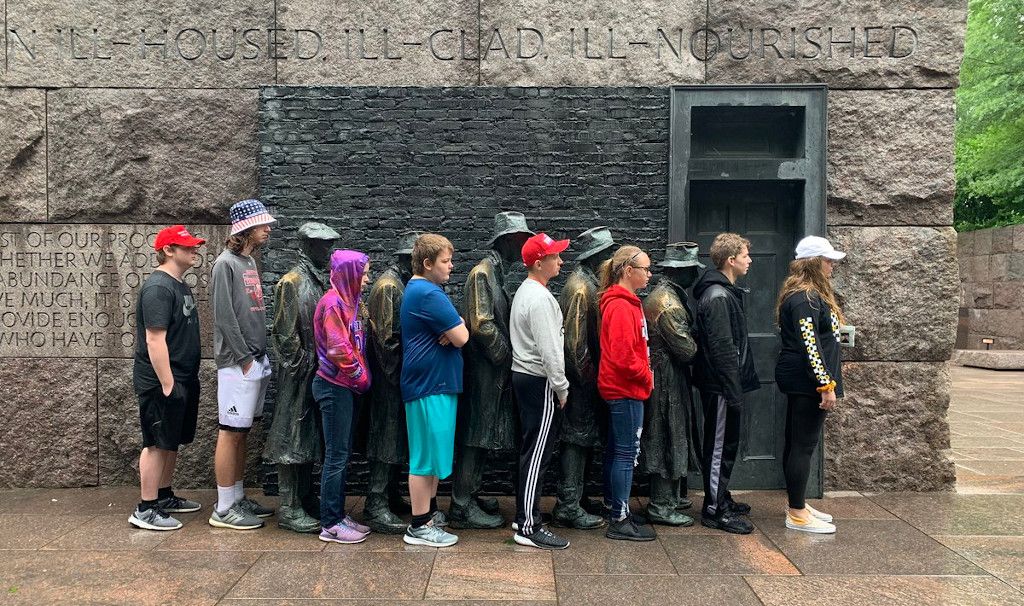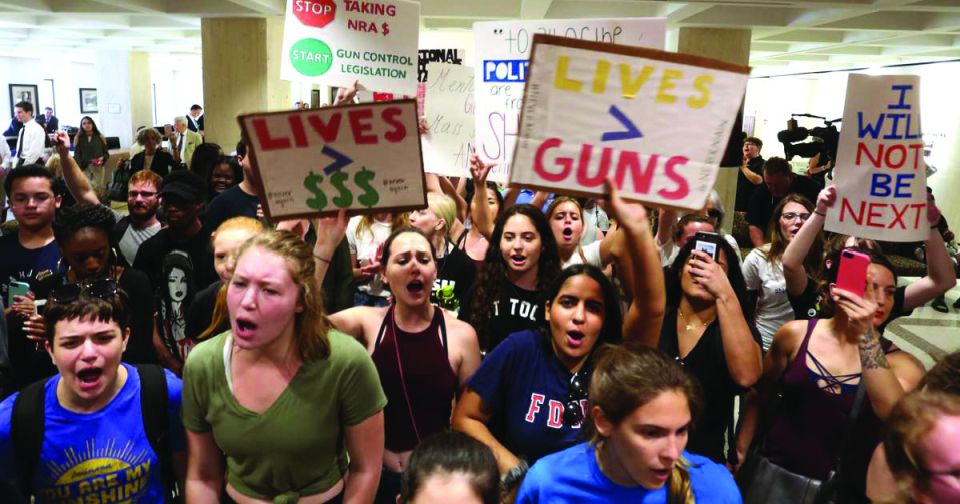Per-Åke Westerlund is a member of Rättvisepartiet Socialisterna (ISA in Sweden).
“The shock to the global economy from COVID-19 has been both faster and more severe than … even the Great Depression.” That comment by economist Nouriel Roubini on March 24 indicates the growing possibility of global events entering an entirely new period. One way to prepare is to study and draw lessons from the 1930s
The 1930s was a decade during which the fate of entire capitalist system was on the line. With a strong revolutionary socialist international and mass parties the hatred and willingness to struggles could have ended the system. The best novel of the decade, John Steinbeck’s The Grapes of Wrath, pictures a family’s hardship during the Depression, travelling on its way to a better society.
The 1920s — speculation and bubbles
The period preceding the Great Depression has many similarities with the period before the crisis of 2008–09, features that were repeated on an even bigger scale in the following decade. The 1920s laid the basis for the Depression that was triggered by the crash on Wall Street in October-November 1929. However, studying the processes and similarities, it’s important to understand the fundamental reason for these crises is the capitalist system itself.
One main contradiction in the system is the strive for global markets and global production, while the capitalist class, the bourgeoisie, is nationalist. The capitalist class is dependent on the national state and its forces to compete internationally and to rule over workers and the oppressed in its own country.
The end of the 1800s and early 1900s saw a simultaneous process of globalisation and strengthening of the national states. Similarly, the rapid globalisation in the 1990s and early 2000s, was accompanied by continued increase of military spending, although this was a bit slower immediately after the collapse of Stalinism.
Capitalist globalisation is not a harmonious process, but is building up new sharper contradictions. The globalisation a century ago ended in World War I, the bloodiest conflict the world had then seen. The war was ended by the Russian and German revolutions, with sharp inter-imperialist conflicts remaining. The Communist International predicted a new imperialist war should the working class not take power.
US imperialism came out of the war economically strengthened, in contrast to all other imperialist powers. During the 1920s, 60% of global capital flow came from the US. Its economy was seen as a model, with Wall Street as the global financial centre and big monopolies dominating. Capitalist propaganda said that every household soon would have a car. Herbert Hoover won a landslide victory in the presidential elections in 1928, predicting the “final victory over poverty”.
In Europe, the capitalist classes feared the revolutions that had shaken most countries after the war. Then followed a sharp economic downturn, adding to the already high debt burden from the war. The way to implement the austerity the capitalists wanted was through international agreements, predecessors of the European Union. An international monetary conference in Genoa in 1922 advocated gold convertibility, fiscal discipline and independent central banks. In addition, starting with Britain, many countries returned to the gold standard as a way of imposing austerity, since devaluations and financial stimuli became impossible.
Propaganda said markets would make peace. The volatile financial markets were supposed to be controlled by the Bank of International Settlements that was established in 1928.
As in the recent decades, inequality increased sharply in the 1920s. In the US, wages increased 1.4% a year, shareholders incomes rose 16.4% annually. A way to keep up consumption was to introduce installment payments, increasing household debts. The 200 largest companies owned 69% of wealth and 56% of profits
1929 — the bubble burst
Credit and foreign loans exploded in the years before 1929. New financial instruments were invented. Investment banks were founded for the first time. Manufacturing companies became financial speculators. The big US banks became involved in global financial affairs.
Politicians and capitalists were worried over bubbles and speculation, but did not dare to act for fear of triggering a crisis. Again, similar to what global governments have been doing in the 2000s. Bubble companies defended their high share value with reference to knowledge and good will. A company owned by Goldman Sachs, GS Trading, more than doubled its stock market value from its start in December 1928 to February 1929. In the summer of 1929, shares in the US rose by 25%.
How big was “the market”? Today, capitalist media refer to the market as a kind of natural phenomenon, that needs to be treated well. In 1929, 600,000 of the population of 120 million owned shares in the US. That is less than 1%, although the really important traders of course were much fewer.
The crisis came earlier to Europe, in Germany already in 1927. The powers that Germany was paying war debts to – US, France, Britain – refused to lower their demands, escalating the crisis.
The crash was not one event, but a process following Black Thursday on 24th October 1929. The Federal Reserve, the big Wall Street banks and the government did everything they could, used every possible measure at hand. Several times, the crisis was declared over, for example by President Hoover on 1 May 1930. However, a new big collapse on Wall Street in November 1930, started a three year downward spiral.
The crisis spreading
The Great Depression was a domino reaction. The stock market crash started a deflationary spiral, spreading to production, commodities and world trade. US imports fell 20% from September to December 1929.
Deflation meant an increased burden on everyone with debts, more or less freezing new loans. Industrial production experienced a record drop. Ford sacked three quarters of its workforce, from 128,000 to 37,000, over a period of 18 months. This had devastating effects, however, in today’s Corona crisis, the pace of job losses is much higher.
The US GDP was halved from 1929 to 1931, from $81 billion to $40 billion. Wage costs fell from $51 billion in 1929 to $31 billion in 1931. Investments fell to close to zero.
Even if the figures above indicate wages increasing as a share of GDP, the social consequences were catastrophic. There was food, but no money to buy it with.
Globally, states defaulted, starting in Latin America in 1931 with Bolivia, followed by Peru, Chile, Brazil and Colombia. In Europe, Hungary was the first to default, also in 1931, followed by Yugoslavia, Greece in 1932, Austria and Germany after the coming to power of the Nazis in 1933. Sovereign defaults meant relief for domestic capitalists since this allowed for devaluation and debt reduction, but for workers and the poor it meant worsened austerity.
Nationalism and protectionism
In any major crisis, the bourgeoisie becomes increasingly nationalistic, thereby further aggravating the crisis. In a parallel process, bourgeois opposition parties, social democracy and even some “left” parties tend to support “their” governments.
In the Great Depression, nationalism and protectionism deepened the crisis. As with Trump today, the biggest economies lead the way, having much bigger leeway to go their own way, while remaining dependent on the world market. In 1933, the new US president Franklin D Roosevelt, arrived at an international conference in London and declared that every country had to sort its own economy – currency, debts and deficits. The British government agreed, stating that foreign exposure was their Achille’s heel.
This meant, that in the worst global crisis “no one was in charge”, according to Charles Kindleberger in his history of the Great Depression.
The now notorious Smoot-Hawley act in the US included 21,000 tariff positions. Nationalism and protectionism were now spreading fast. “Canada first” was the winning slogan in elections in that country. Britain and France tightened their trade within their colonial empires. Germany formed a Reichsmark bloc with Hungary and the Balkan countries.
World trade fell from 2,998 million dollars in January 1931 to 944 million dollars two years later. Unemployment rose to 24% in the US and over 30% in Germany.
Roosevelt
Roosevelt’s presidency has mistakenly been given credit for solving the crisis. In fact, Roosevelt took some measures disliked by the capitalists to soften the effects. He also sharply criticised the speculation, debts and bubbles of the previous period. However, he never aimed to change the system, but to “save the private profit system,” as he told those criticising him.
However, there are many similarities to today. Those arguing for privatisation, shrinking the public sector and reducing its debts, came begging to the state to save them. Business applauded state intervention and support, decisions to build bridges and roads, as well as other measures that gave them profits.
Private capitalism’s interest became a priority for the state in each country. Measures were taken and stressed as “strong and decisive” in order to support the government and prevent action from below. Roosevelt was particularly interested in stopping the strike wave in the US in 1934.
Under Roosevelt’s New Deal, unemployment dropped from 15 to 9 million, many of the new jobs were on minimal wages. There was no social safety net, apart from for big business.
By mid 1937, production in the US was back to the level of 1929. Worker’s struggles had increased wages and therefore consumption. But then came a new sharp downturn, Black Tuesday 19 October 1937. A crisis followed with a sharp fall in production and commodity prices. For example, cotton prices fell 35% and rubber 40%, hitting countries entirely relying on commodities.
The crisis in 1937–38 proved that the New Deal was far from solving the crisis. The underlying weaknesses in the system continued to trigger new crises. And still, only an economy of the US size had the resources to try this. In most countries, the bourgeoisie handed over state power to dictatorships and even fascism, in order to prevent revolution.
What seemed to be a gain in a single country was still a loss for the global system. There was no “world power” or cooperation, no “lender of last resort,” as Kindleberger and others explain. Only with armaments and World War II did production recover.
Class struggle and revolutions
The 1920s and 30s was a period of revolution and counter-revolution, of extreme twists and turns. No-one analysed this period more sharply, with concrete advice to the labour movement and its parties than Leon Trotsky, who led the Russian revolution and was purged and deported by the Stalinist dictatorship.
In line with Marx, Trotsky explained how the fundamental cause of the crisis was the inability of the system to develop productive forces, and the collision between the productive forces and the nation state. Also, the only way forward was to solve the class struggle between the capitalist class and the majority, the working class, resulting in international socialism.
Despite the Stalinist degeneration of the USSR, the memory of the victory over the tsar and capitalism was still fresh. The established parties were undermined by the crisis, alongside banks and other institutions of capitalism. There was a mass radicalisation in society and an explosion of struggle.
In the US, class struggle increased rapidly in 1934, after an initial period in which the crisis stunned workers. One and a half million workers were on strike in 1934, with the Los Angeles Times describing a strike in San Francisco as a “communist revolt.” The Teamsters’ strike and uprising in Minneapolis, led by the Trotskyists, was a model of workers organising. Committees against evictions and of unemployed were spreading. Police repression against the workers was massive and brutal. Sit-in strikes started in 1936, and increased to 477 sit-in strikes the following year. The new industrial trade union federation, CIO, started in 1935, exploded to five million members in 1936.
Internationally, there were revolutions and mass struggles in many countries, with France and Spain at the forefront 1935–36. The “leadership” given by the then Stalinist Communist parties and the social democratic parties led to devastating defeats, as had their failure to block Hitler coming to power in 1933, despite having mass parties and an organised, even armed, working class. This underlines the serious and decisive task to build worker’s organisations and parties that can achieve victory and abolish capitalism.
After the Great Depression and today
Following the experience of the Great Depression – the economic failure, the experiment with fascism and the WWII, plus the strengthening of Stalinism following the war – capitalists had to put on a democratic face. They were forced to give concessions, for example the National Health Service in Britain, welfare systems in some European countries, to give up colonies (although keeping their economic stranglehold). A number of institutions kept a lower profile such as stock markets, banks, finance business. In the era of the post-war upswing this was a price they were prepared to pay.
However, political radicalisation in the 1960s and 70s, class struggle and colonial revolutions, economic crisis in the mid 1970s and softness of bourgeois political parties, led the capitalists to turn to neoliberalism and attacks on workers and welfare everywhere. They were seemingly successful, especially with the fall of Stalinism and the bourgeoisification of social democracy.
Now, this period has come to an end. We will see a combination of concessions and attacks, stimulus and austerity, from the capitalists, who with the new crisis have turned even more towards nationalism than the trend in 2018–19. This crisis will create a mass understanding that the system is fundamentally wrong, even from a low level of struggle and consciousness in many countries. The working class is far from defeated, but unorganised.
The 1930s show us that capitalism will survive at any cost if there is no conscious working class movement to abolish it. The task in this new crisis is to build such parties, movements and an international.




